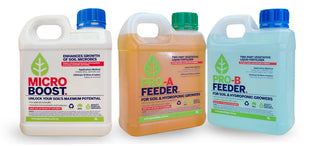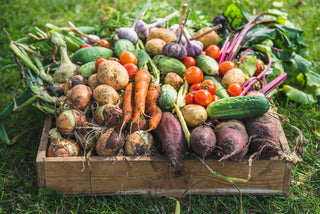The requirement of light intensity and level depends on the type of plant you are choosing. Mostly house plants or indoor plants required indirect or less amount of direct light, whereas most of the landscape plants or orchard (outdoor) plants required direct light.
| Sr. no | Direct Light | Indirect Light |
|---|---|---|
| 1 | Sun rays directly hit plants | Sun rays bounce or reflected from an object and indirectly hits the plant |
| 2 | Outdoor Light | Indoor light |
| 3 | In some plants, direct light, or more intense light may cause burning, browning or fading colour of foliage, drying of leaves, and leaf drops. | Less light in some plants may cause wilting, loss of vegetation, no new growth, soil remain wet, and smaller leaves. |
| 4 |
Dwarf citrus, Succulents, Beaucarnea recurvata, or ponytail palm, Herbs, Olive trees, Sansevieria trifasciata, snake plant, Strelitzia nicolai, white bird of paradise, Yucca elephantipes, spineless yucca, Croton (Codiaeum variegatum), Basil (Ocimum basilicum), Ponytail Palm (Beaucarnea recurvata), China Doll Plant (Radermachera sinica), Jasmine (Jasminum spp.), Sago palm (Cycas revoluta), Ti Plant (Cordyline minalis), Barrel Cactus (Echinocactus grusonii), Moon Cactus (Gymnocalycium mihanovichii), Nivosa Cactus (Parodia nivosa), Aloe Vera (Aloe barbadensis), Burro’s Tail (Sedum morganianum), Coral Cactus (Euphorbia Lactea Cristata), Crown Of Thorns Plant (Euphorbia milii), Desert Rose (Adenium obesum), Echeveria (Echeveria spp.), Hens and Chicks (Sempervivum tectorum), Jade Plant (Crassula ovata), Snake Plant (Sansevieria trifasciata), Aeonium (Aeonium, arboreum), Zebra Haworthia (Haworthiopsis fasciata), Avocado (Persea americana), Lime (Citrus × aurantiifolia), Kumquat (Fortunella japonica), Meyer Lemon (Citrus x meyeri), Tangerine (Citrus x reticulata)
|
Aglaonema 'Eileen', Aglaonema 'Spitfire', Alocasia 'Amazonica Dwarf', Alocasia 'Bambino Arrow', Alocasia 'Stingray', Alocasia 'Zebrina', Alpinia 'Zerumbet Variegata', Calathea 'Elliptica', Calathea 'Freddy', Calathea 'Orbifolia', Calathea 'Sanderiana', Devil's Ivy, Dieffenbachia 'Amy', Epipremnum 'Njoy', Fern 'Blue Star', Fern 'Boston', Fern 'Crispy Wave', Fern 'Elkhorn', Fern 'Kangaroo', Fern 'Stingray', Ficus 'Abidjan', Ficus 'Benjamina Variegata', Ficus 'Evergreen', Ficus 'Melany', Ficus 'Robusta', Ficus 'Ruby', Ficus 'Tineke', Ficus Lyrata, Fiddle Leaf Fig 'Bambino', Monstera Deliciosa, Monstera Tauerii, Nandina Filamentosa, Philodendron 'Black Cardinal', Philodendron 'Congo Apple', Philodendron 'Imperial Green', Philodendron 'Imperial Red', Philodendron 'Pink Princess', Philodendron 'Shangri La', Pilea Peperomioides, Schismatoglottis 'Spotty', Peace Lily Spathiphyllum 'Lauretta', Spathiphyllum 'Pablo', Syngonium 'Silver Goose'
|
| 5 | Example of direct light: shinny area in the garden, daytime light, or bright light area like window/door facing the sun, etc. | Examples of indirect light: light from curtains, filter light, light reflected from walls, shaded areas, etc. |
Is morning sunlight direct light?
Yes! Morning sunlight is assumed direct sunlight but it is less intense than the daytime sunlight. The intensity of morning light is low therefore it is also beneficial for the indoor plants.
Some indoor plants are at their blooming stage but they don’t show their flowers because they required more light than the other indoor plants. So, if you keep them in the morning light for a few hours they will start blooming perfectly.
From which way do I get the higher level of light?
As we know the sun exposure is maximum at the equator, so your windows facing south get the maximum light for the northern hemisphere. Whereas, the southern hemisphere window which faces the north gets the maximum level of light.
The sun moves in an east-west direction means the west side faces the light in the morning and east in the evening, the most part of light intensity stands in the east. Now you can easily judge the light pattern anywhere on the earth.
Partial Sunlight
The indoor light stands for about 3 to 6 hours a day. It can easily maintain an indoor room that has 2-3 windows or some source of indirect light from the ceiling etc. Most indoor plants like partial sunlight, however, the flowering plants or plants at their blooming stage show poor productivity in partial sunlight.
Light from the window is a direct light?
The sunlight coming from the window is mostly direct light because the rays that pass through the glass are refracted (path of light slightly changed) not reflected. Whereas, when the sun is facing opposite to the window direct means not parallel to the window, this light is indirect.
How can I measure the intensity of light for my plant?
You can measure the intensity of light by the following 4 methods
1-By noticing the shadow in the mid of the day when the sun is at its peak, absorb and divide the total area into full light, partial light, and shadow.
2-Download the light measuring app on your smartphone and make the make of your area according to the data gathered.
3-You can also purchase a light meter from the store.
4-The plants also express their specific need for light. So, symptoms of plant health will lead you to define the exact place for your plant.
Can I use artificial glow light as a source of direct light?
The answer is you can use a good fluorescent light for a small time for the growth of plants. As a horticulturist, I will not recommend artificial light as a permanent source for your plants because natural light contains a broad spectrum of wavelengths along with the perfect intensity of photons which will accelerate the complex functioning inside the plants like photosynthesis, new cell formation, etc.





